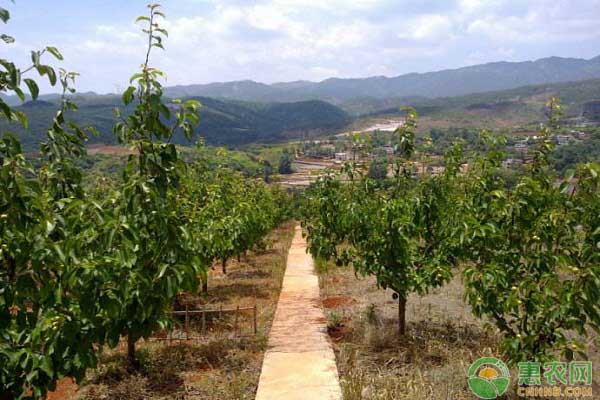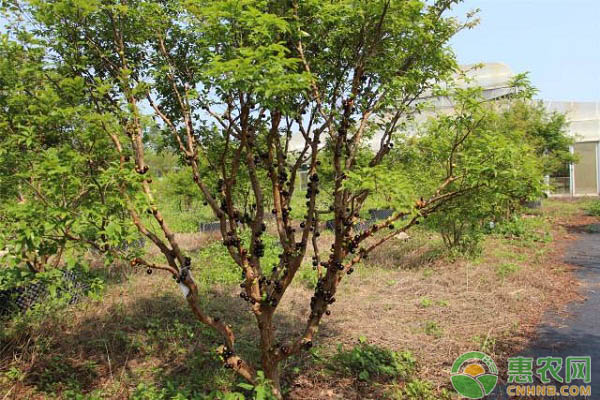Do fruit trees need to be scraped? Today, we are talking about the topic of scraping the fruit trees, because in the dormant period of the fruit trees, the fruit trees have to be scraped, so how to scrape the fruit trees? What are the key points for fruit tree scraping? In fact, the main purpose of scraping the bark of fruit trees is to scrape off the pests or germs hidden in the bark, to achieve the purpose of controlling pests and diseases and rejuvenating the tree. In this way, on the one hand, pests and diseases can be controlled in a pollution-free manner, and on the other hand, the use of pesticides can be reduced, costs can be reduced, and benefits can be increased. The purpose is as simple as this, as long as the bark measures are done well, the winter pests can be reduced by 70%-80%, the overwintering bacteria can be reduced by more than 80%, and the growth season can be reduced once, saving costs and increasing benefits. Therefore, every fruit grower in the dormant period, many fruit farmers like to take measures to scrape bark to control pests and diseases. However, because many people do not master the technical essentials, the effect of scraping the bark is not obvious. Some people know that scraping the bark of fruit trees can prevent pests and diseases, but they don’t know what kind of fruit trees will be used to scrape the skin. Therefore, regardless of the object, there is a mess, for example, some young years without old bark. The fruit trees are also scratched, not only failing to prevent pests and diseases, but also hurting fruit trees. Therefore, it is necessary not only to grasp what kind of fruit tree to scrape, but also when to scrape the fruit tree and how to scrape it to achieve the effect. First of all, it is necessary to clarify the problem of what fruit trees are scraped. In general, the fruit trees are scraped out of the old and old skins, mainly for pears, apples, dates, chestnuts, peaches, apricots, plums, persimmons, etc., which have coarse and old skins and lesions for more than ten years. If it is not easy to scrape off the method of using suede or rubbing the bark. When scraping the skin, it depends on whether the fruit trees have thick old skin and pests and the pathogens overwinter. If not, there is no need to scrape the skin. Second, we must make clear when to scrape the fruit trees. Some people think that the earlier the scraping from the leaves to the flowering, the better, but this is not the case, usually after the soil is frozen and before the spring buds, but the early spring scraping can ensure the tree is good and the tree is safe for winter, and many are inside the trunk. Wintering natural enemies (such as small flower buds, sputum mites, ladybugs and a variety of parasitic wasps) are active earlier than pests. Therefore, in order to protect the natural enemies of pests while eliminating pests, the best time for scraping the skin should be carried out when the pests have not yet emerged, the natural enemies have been out of the scorpion activity or feathering, so the scraping should be late. Again, it is necessary to clarify what part of the problem is being scraped. The reasonable scraping site of the fruit tree during the dormant period is determined by the wintering place of the pest on the fruit tree. Generally, it is mainly the main skin and the coarse skin and the sable skin below the main branch. For the fruit trees that have already suffered from pests and diseases, they should be scraped according to their wintering places on the fruit trees. If you want to see a doctor, you should also carefully observe the twigs over 1 year old. Do not let go of a small disease, because mung bean-sized diseases can produce hundreds of millions of colonies. After the whole tree is scraped, it is necessary to repeatedly check it up and down to completely remove the sick body. Fourth, it is necessary to clarify the extent of the problem. Some people think that it is better to shave a little, and some people think that it is OK to scrape the disease. In fact, it is not good to scrape too heavy or too light. Therefore, when scraping the skin, it should be determined by the tree species, age, and variety. It is necessary to prevent scratching the tender skin and the xylem, so as not to reduce the tree potential, but also to avoid being too light, and the effect is not obvious. Therefore, the depth is just to scrape off the skin on the body, that is, the tree is white, the tree is green, and the disease is not scratched. Fifth, we must be clear about how to deal with the scraped skin. Most of the bark that has been scraped off has germs or eggs containing pests, so it needs to be treated instead of being discarded. Therefore, when scraping the skin, pay attention to laying plastic paper or fertilizer bag under the tree, collect the scraped skin, and do not pile it on the side of the orchard or burn it. Because it is stacked on the side of the garden, the bacteria can continue. With the flow of water, burning and wasting resources, it is best to dig deep pits in the orchard and bury the fallen leaves together, and it is still the best fertilizer after rot. Sixth, we must clearly understand how to protect the tree after scraping off the bark. After scraping off the bark, it can't be ignored. It is necessary to take measures to prevent the infection of the diseased stems, and to reduce and prevent the sunburn and freezing damage of the fruit trees. Therefore, it is necessary to form a film on the tree by spraying white or spraying non-polluting pesticides, so that the bacteria can not easily invade and infect, and the water of the tree is not easily lost. In this way, the effect can be achieved. Ring Die Pellet Machine,Feed Processing Machine,Pellet Machine Of Animal Feed,Feed Pellet Making Machine Shandong Longze Mechanical Equipment Co.,Ltd , https://www.pelletmachinefactory.com

